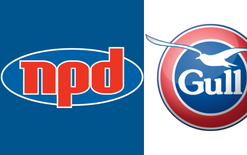Driverless buses on way

The Renault Group says it has a “pragmatic vision of technology” based on the principle that innovation only makes sense if it’s shared, economically accessible and useful to as many people as possible.
Technological developments are now making it possible to offer increasingly effective driver assistance and delegation functions adapted to different types of vehicles and use.
For individual vehicles, Renault already offers driving assistance on most of its models, providing comfort and safety.
Further automation of some functions, with the aim of achieving complete autonomy, seems unlikely for the time being – especially given current regulations, consumer expectations and the cost of the complex technology involved.
However, when it comes to public transport, Renault intends to be a “real player” in sustainable and autonomous mobility.
To this end, the group is developing an electric, robotised and pre-equipped miniBus platform, pictured above, that will host various automation solutions from specialist partners.
Experimentation has been under way for several years. Others will soon be announced and with WeRide, a world expert in autonomous vehicles.
Renault’s autonomous strategy
There is international consensus around six levels on “automated and autonomous driving”, ranging from level L0 without any driving assistance to level L5, which is fully autonomy in all situations and with no on-board operator.
In the case of individual vehicles, Renault is concentrating its efforts on the L2 or even L2+ level, with several driving assistances that are at the top level of the market, and which make its vehicles safe and pleasant to drive with confidence.
Examples of this are contextual cruise control or lane-keeping assist and, soon, the automatic overtaking function. Although assisted, the motorist remains responsible for driving.
There is a significant technological complexity gap between L2 automation and L3 autonomy because the vehicle must be able to operate safely in complex environments with limited driver supervision.
At the moment, the cost to be borne by customers in relation to motoring benefits would make demand insufficient or even anecdotal.
At the same time, Renault is ensuring the architecture of its vehicles can evolve towards driverless if expectations, regulations or costs make this breakthrough feasible.
That said, when it comes to public transport it sees the relevance of offering autonomous vehicles with annual need estimated at several thousand miniBuses over the next few years.
The driverless minibus
In Europe, more than 400 major cities will gradually become low-emission zones while still having to ensure the mobility of people.
Convinced of the benefits of autonomous public transport, Renault has been conducting trials for several years to define the best response to the needs of local authorities, such as the “Mach 2 project” announced in 2023.
From 2026, this scheme will see a fleet of automated electric minibuses integrated into the public transport network of Chateauroux Metropole in France.
Ultimately, these trials will lead Renault to offer a robotised electric miniBus platform based on the New Renault Master. It will be able to integrate automation solutions from specialist partners, such as EasyMile, Milla and WeRide.
More flexible, autonomous miniBuses will be able to operate 24/7 in complete safety as a zero-emissions alternative or an efficient complement to existing solutions – thinks trains, trams and buses – in terms of costs and CO2/km per passenger.
The extra costs of robotisation and automation could be offset by the absence of on-board operators. A simple remote supervision system will be required to operate a fleet.
Working with global specialist
Renault Group is initiating a collaboration with WeRide, a world-renowned expert in autonomous driving, for the large-scale commercial deployment of vehicles with an L4 autonomy.
L4 is when vehicles can manage driving situations on their own, within an operational defined domain and with remote supervision, but without an on-board operator.
Since 2018, WeRide has become a global benchmark for autonomous vehicles. It has more than 700 service, including 300 miniBuses, that have clocked up more than 28 million kilometres in Asia, the Middle East and North America – and soon in Europe with Renault.
“We are moving forward to implement our autonomous vehicle strategy,” says Gilles Le Borgne, the Renault Group’s chief technology officer.
“As a result, and thanks to our experiments and partners, we will be in a position well before the end of this decade to propose a highly relevant range of autonomous, low-carbon minibuses.”



.jpg)


